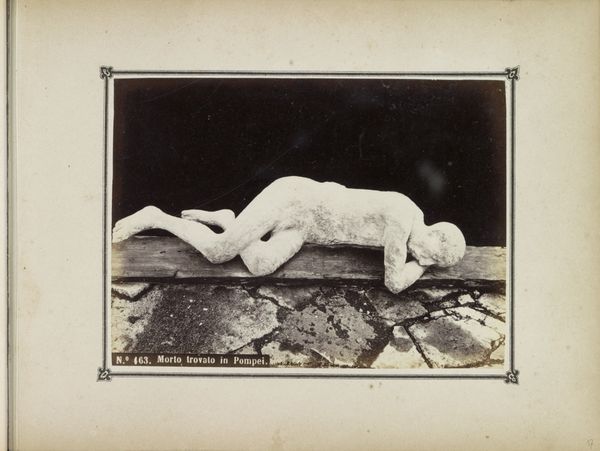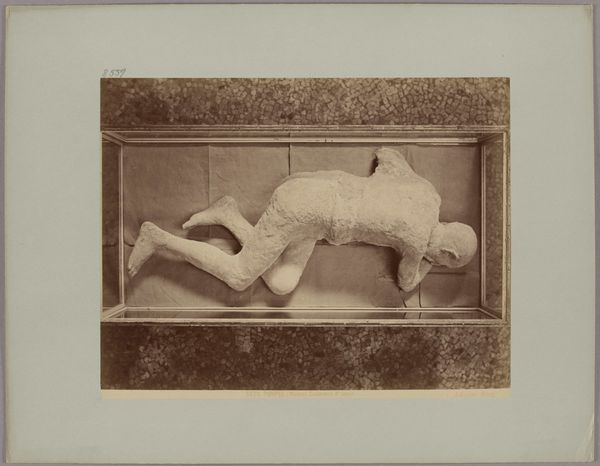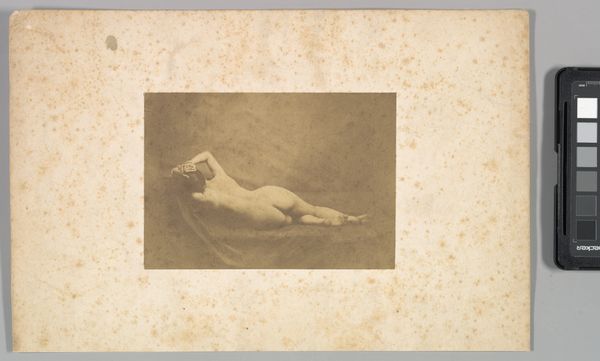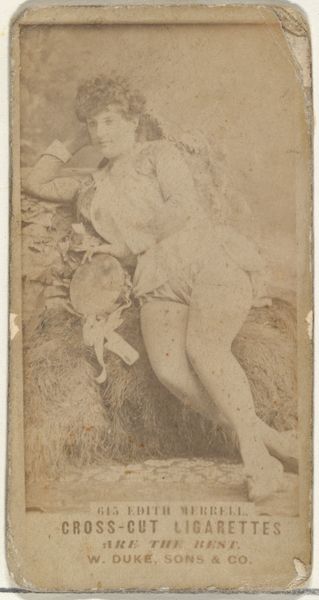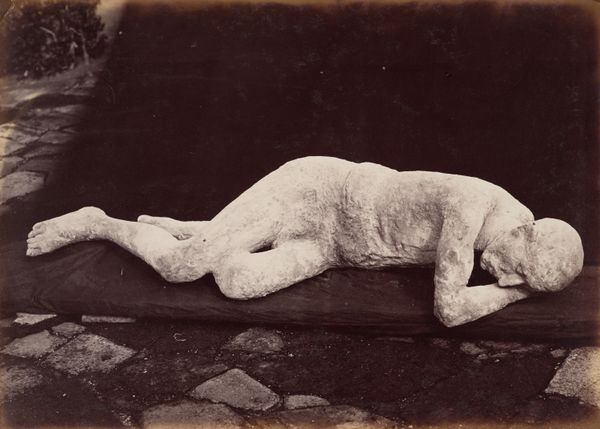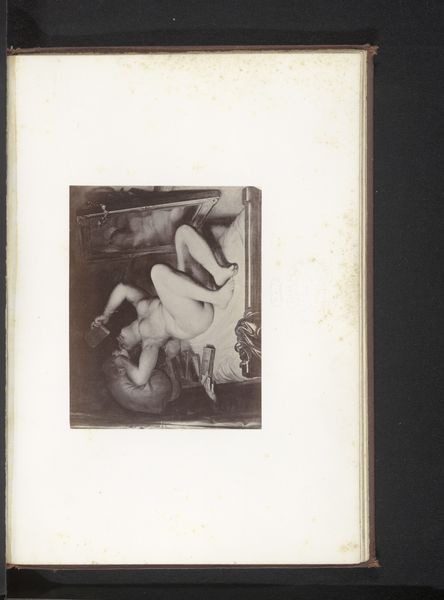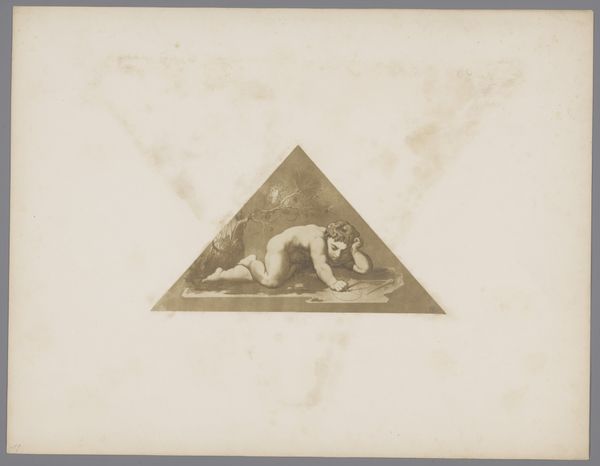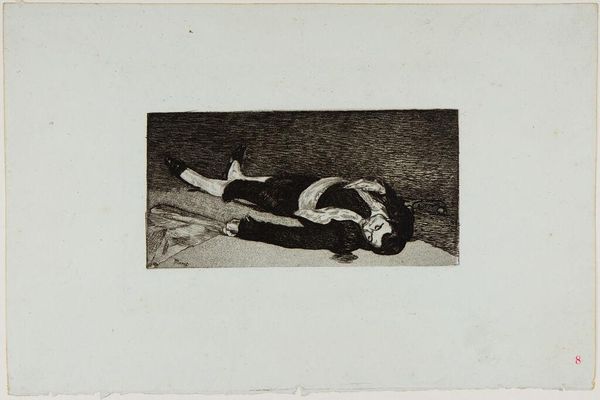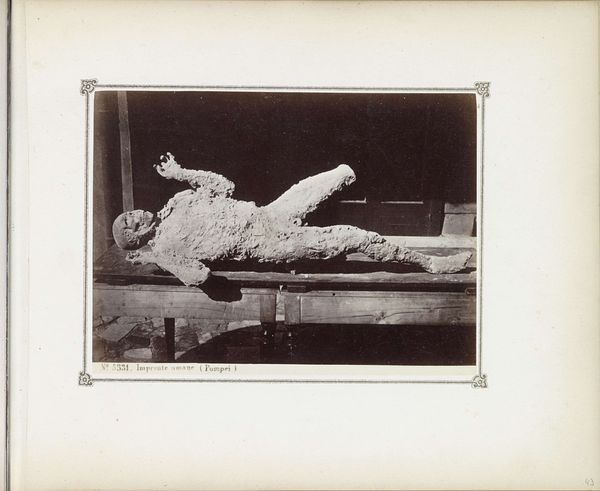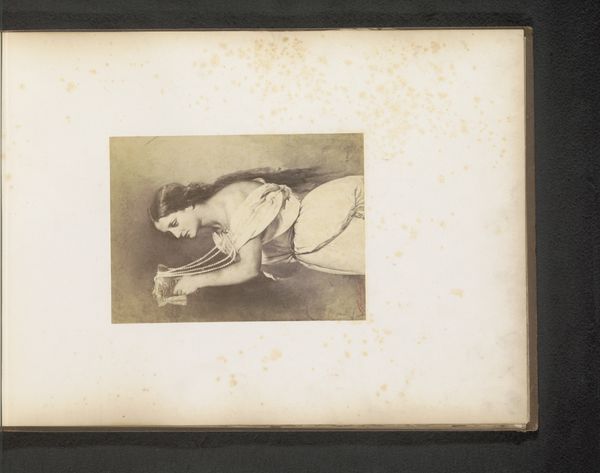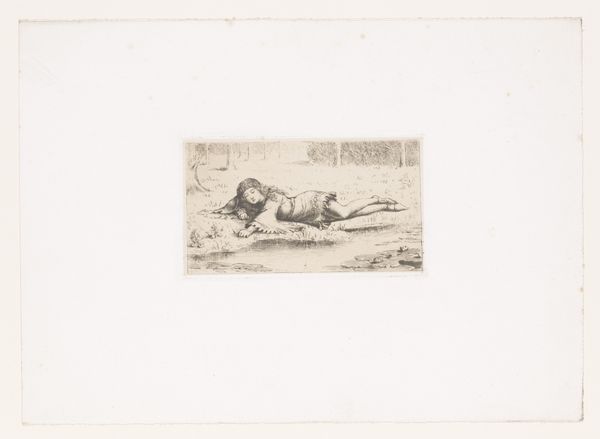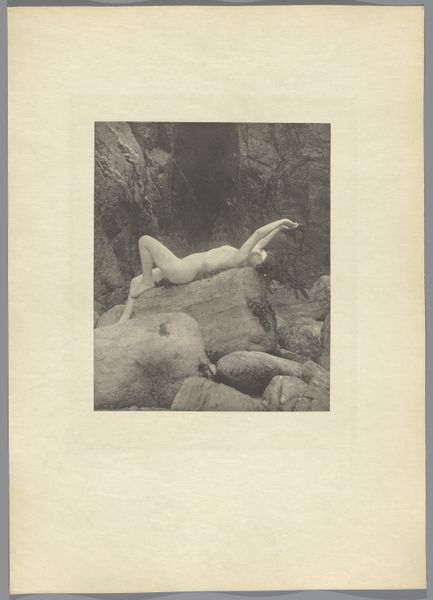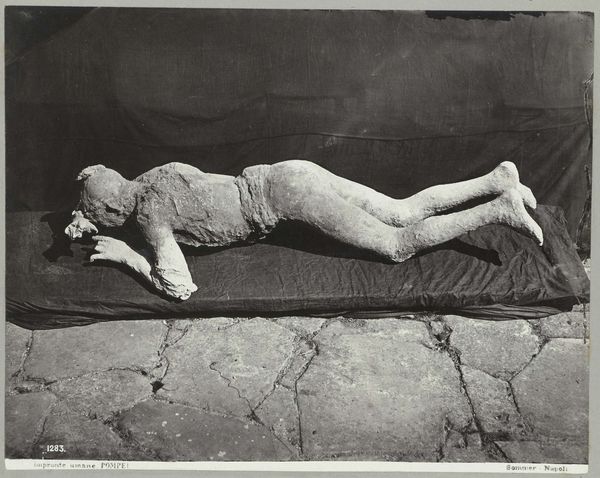
photography, gelatin-silver-print
#
portrait
#
still-life-photography
#
figuration
#
photography
#
romanesque
#
momento-mori
#
ancient-mediterranean
#
gelatin-silver-print
Dimensions: height 198 mm, width 251 mm
Copyright: Rijks Museum: Open Domain
Editor: Here we have an anonymous gelatin silver print, dating from around 1880 to 1920, titled "Cast of a victim of the volcanic eruption in Pompeii." It’s… haunting. The stark image of the body, the surrounding ruin... it speaks of so much suffering. What do you see in this piece? Curator: It’s a powerful image, isn’t it? I see a confluence of history, trauma, and representation. This photograph exists as both a record of unimaginable suffering and as a product of a specific historical context. We're looking at the rise of archaeology as a science intertwined with colonial power. Consider the act of excavation, of literally unearthing the past. Who gets to tell these stories? Who profits from displaying this human tragedy? Editor: That's... a really good point. The romanticism of classical antiquity often overshadows the violence inherent in its rediscovery and the inequalities that shaped it. It seems less a scientific discovery and more…a morbid spectacle. Curator: Exactly! The photograph flattens the individual into an object of study and consumption. We must also ask, how does seeing this image shape our understanding of trauma? Does it promote empathy or reinforce a detached voyeurism? Editor: It really makes you think about how we engage with historical suffering, and the ethical implications of turning tragedy into a spectacle, or in this case, a photograph. Curator: Precisely. It prompts a crucial dialogue on power, representation, and the responsibility of witnessing history, especially the parts that continue to shape our present. Editor: Wow, I'll never look at archaeological photography the same way again. Thanks, this was really eye-opening! Curator: The past isn’t just what happened, but also who gets to narrate what happened. It's always relevant.
Comments
No comments
Be the first to comment and join the conversation on the ultimate creative platform.
